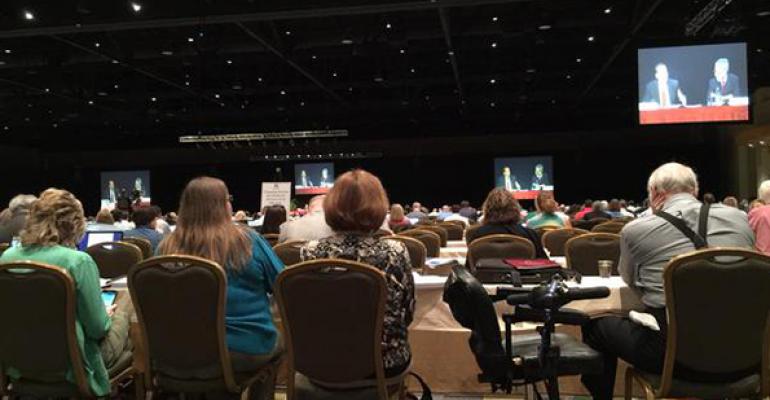The Tax Court filings that generated the most buzz at this year’s 49th Annual Heckerling Institute on Estate Planning involve two related pending cases in which the Internal Revenue Service has challenged a defined value clause sale to a grantor trust in exchange for a promissory note: Estate of Donald Woelbing v. Commissioner and Estate of Marion Woelbing v. Comm’r. (collectively, the Woelbing).1
In Woelbing, the taxpayer sold stock in a closely held business, Carma Laboratories, Inc., to a trust for a $59 million promissory note with interest at the applicable federal rate in effect under IRC Section 1274(d). The beneficiaries executed personal guarantees equal to 10 percent of the purchase price, and the trust already owned insurance policies with cash value of $12.6 million prior to entering into this transaction. The purchase documentation contained a Wandry-style (two-party) defined value clause (DVC) in the event of IRS modification to the valuation of the stock transferred.
The IRS contends that: (1) IRC Section 2702 applies and, therefore, the trust’s promissory note should be valued at zero for gift tax purposes; (2) the stock’s value was actually $117 million, and a gift resulted to the extent of the amount in excess of the promissory note value, with the DVC disregarded; and (3) IRC Sections 2036 and 2038 apply to the stock for estate tax purposes to bring it back into the estate at its fair market value at date of death.
In effect, the IRS’s position is that the loan isn’t a bona fide loan but rather a gift. A critical determinant appears to be whether there was a reasonable expectation of repayment of the loan at the time it was made.2
Reminiscent of the celebrated Karmazin settlement of more than a decade ago (which is generally regarded as having been a huge taxpayer victory against a similar IRS attack on a sale to a grantor trust that was funded with a promissory note),3 this case reinvigorates the age-old question of whether using a grantor retained annuity trust (GRAT) may be a safer technique than a sale to a grantor trust funded with a promissory note, all other things being equal. The consensus that seemed to emerge at Heckerling is that practitioners should advise clients who are now considering sales to grantor trusts funded with promissory notes that this case is out there and that GRATs are clearly safer than sales to grantor trusts (although sales to grantor trusts can be very effective).
A frequently expressed sentiment concerning Woelbing is that the IRS examiners— understaffed and running out of time on the statute of limitations—are throwing in the “kitchen sink,” and this is one of their throw-in arguments. That being said, it would appear that the safer course in promissory note sales is to require that the note be secured with collateral (including via a pledge agreement) to rebut a potential IRS argument that there was no reasonable expectation of repayment at the time of the sale.
Endnotes
- Estate of Donald Woelbing v. Commissioner, Docket No. 30261-13; Estate of Marion Woelbing v. Comm’r, Docket No. 30260-13.
- A related question that the Internal Revenue Service has apparently asserted in other audits is whether the promissory note is worth its face value, even if the interest rate on the promissory note is at the applicable federal rate in effect under Internal Revenue Code Section 1274(d).
- In Karmizin, Tax Court Docket No. 2127-03, in addition to contending that the sale to the trust was a retained interest that didn’t satisfy the qualified interest rules under IRC Section 2702 (and therefore worth zero for gift tax purposes), the IRS treated the promissory note as a second class of equity that didn’t satisfy the requirements of IRC Section 2701 (and therefore worth zero on that basis as well). It doesn’t appear that the Section 2701 argument has been asserted by the IRS in Woelbing.





